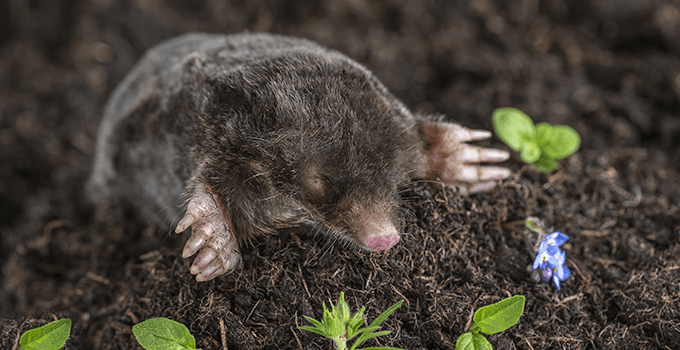
How To Tell A Mole From A Vole
7/26/2018
Moles have long, narrow noses, small eyes, and though they have ears, they cannot be seen. Their noses and tails are pink as well as their feet which are used for digging. Moles are dark gray or brown in color and are about 5-8 inches in length. They live primarily underground and leave telltale cone-shaped mounds and ridged tunnels all over lawns and yards as they dig. Moles can do a lot of damage to lawns and landscaping by tunneling underground, which in turn can destroy entire root systems. Their mounds make the ground bumpy, which makes it more difficult to mow your lawn and makes the ground uneven to walk on. Though moles are not typically viewed as a dangerous pest, it is still important to take precautions against them! Moles can carry rabies, and if threatened, they will bite, which makes these lawn pests rather dangerous. Pets and children should be kept away from the areas of your property where moles are present.
Voles are about 3-5 inches long, have brown or gray thick furry coats, short legs and tails, and partially-hidden ears. These rodents are considered lawn pests as they make passages both underground and aboveground. These small rodents are famous for creating lawn-damaging holes all over yards and properties. They feed on vegetation and can destroy landscapes, lawns, flower beds, and gardens. Voles are also known to carry parasites such as fleas and ticks that can spread harmful illnesses like Lyme disease and Rocky Mountain spotted fever. These rodents are also known to cause diseases such as tularemia and rabies. Voles will bite if handled or if they feel threatened, so great care should be taken to avoid these pests if they are present in your yard.
Moles prefer to live in cool, moist, shaded soil, while voles typically like high dry spots under trees, but the reason they take up residence in your yard is the same: to have full access to their favorite food source. Moles primarily feed on underground insects and can eat up to approximately 75% of their weight every day! Voles prefer to feed on vegetation, bark, plants, and gardens, and are perhaps the more dangerous of the two pests to both you and your lawn.
In either case, no matter which pest is damaging your lawn, the solution to the problem is the same: contact Schendel Pest Services! Our professionals can help eliminate your mole or vole problems so that you can get outside and enjoy your yard once more! Click here to learn more about our mole and vole control solutions or give us a call today at Schendel Pest Services!










